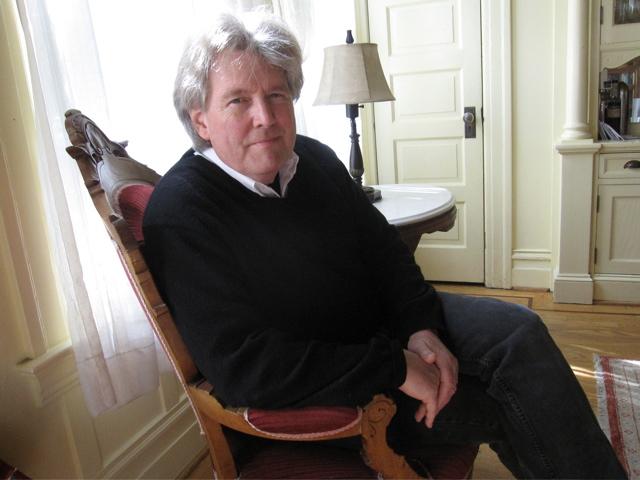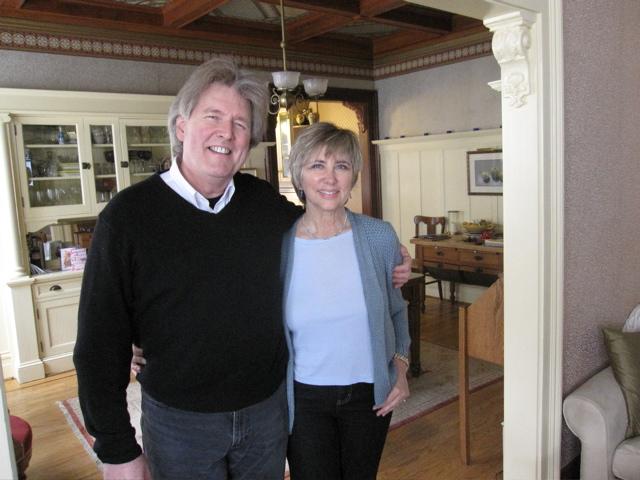
RETURN TO HOME PAGE
FEEDBACK
 |
March 2011 RETURN TO HOME PAGE FEEDBACK |
By Tim Innes

Noe Valley resident Mike Underhill is the lead trial counsel representing the United States in the Deepwater Horizon oil spill. Photo by Pamela Gerard If you spill oil that fouls waterways and beaches and harms marine life and waterfowl, you're going to run afoul of Mike Underhill.
The attorney, a Noe Valley resident since 1983, heads the team that’s trying the government’s case against BP and eight other companies in the aftermath of the Deepwater Horizon oil spill. The civil suit, filed Dec. 15 in federal court in New Orleans, seeks to hold the defendants responsible for cleanup costs, environmental damage, and economic losses resulting from last April’s Gulf of Mexico oil spill, the worst in the nation’s history.
Under the Clean Water and Oil Pollution acts, civil penalties could exceed $20 billion.
The San Francisco–based team, part of the Justice Department’s Environment and Natural Resources Division, normally handles cases on the West Coast and Pacific Rim. A sister office in Washington is responsible for the Atlantic and Gulf coasts. But because of the California team’s experience with the 2007 Cosco Busan spill in San Francisco Bay—Underhill handled the litigation that won a $79.5 million settlement from the shipping company’s insurer—his group was assigned to the Deepwater Horizon case.
As lead counsel, Underhill spends three or four days a week in New Orleans mostly deposing witnesses. While acknowledging that there are worse places the government could be sending him, Underhill is still happy to say goodbye to the Crescent City at the end of the week and fly home. “I really miss my family,’’ he says.
That family includes his wife, SA Kushinka, a healthcare technology consultant; his stepdaughter, Juliana, 13; a cat, Edgar; and a dog, Whistler. They live in the landmark 1877 Axford House at 25th and Noe streets, which Underhill purchased in 1987 after living in the adjacent carriage house for four years. The carriage house has since been sold.

Mike Underhill and wife SA Kushinka cherish their weekends together, when the only spills they worry about are those in their own kitchen. Photo by Pamela Gerard Unfortunately for the family and the rose garden he’d be helping to maintain if he were home, Underhill expects to be commuting to New Orleans for another couple of years.
A member of a pioneer California family—his forebears emigrated from Illinois by covered wagon in 1864—R. Michael Underhill grew up in Sacramento but spent much of his youth visiting his grandmother in San Francisco. Later, while attending UC Berkeley, he lived in the city and commuted to classes because he felt so much more at home here.
After graduating in 1974, Underhill set out for Alaska to seek his fortune working on the pipeline. His money ran out in Ketchikan, leaving him far from his destination but undaunted. “I fell head over heels [in love] with Alaska,’’ he says.
Underhill spent five years in the 49th state, supporting himself as a cannery worker, fisherman, cook, logger, and deckhand aboard the ferries that ply the Inside Passage between Puget Sound and the Alaska Panhandle. It was his experiences as a fisherman and merchant seaman that sparked his interest in a career in maritime law.
Returning to the Bay Area, Underhill studied law at the University of San Francisco, with an emphasis on maritime and environmental law. He made ends meet working as a law clerk and as a deckhand aboard a Red and White Fleet tour boat.
After graduating cum laude in 1982, Underhill spent a year in private practice before joining the Justice Department, where he heads what is now known as the Torts Branch, Civil Division (Admiralty).
“I realized that the practice of law was about more than making money,’’ he says. “It’s about effecting change in a good way. Yes, I make a decent salary. But more important is that I am doing something I can be proud of. As a DOJ attorney, I’ve already had five big environmental cases. Most people in private practice don’t have more than one in a career.”
Underhill has also taught maritime law at the USF law school, spoken at maritime symposia, and written extensively about the subject.
Underhill’s first big case came in 1989, when the tanker Exxon Valdez ran aground and spilled 11 million gallons of crude in Alaska’s Prince William Sound, waters he knew well.
“It happened on March 24, which was Good Friday. I heard about it on the car radio on Saturday and went straight to the office. By Monday morning we had a complaint on my boss’s desk in Washington, and within days I was on a plane to Alaska to interview the Coast Guardsmen and others on the scene.’’
Litigation stemming from the spill continued until 2008, when the U.S. Supreme Court reduced an Anchorage jury’s award—$287 million in actual damages and $5 billion in punitive damages—to $507.5 million. The spill also led to passage of the Oil Pollution Act, one of the laws BP is accused of violating. The OPA established that all oil tankers sailing in American waters must have double hulls.
Among the lingering effects of the Exxon Valdez spill was the collapse of the herring fishery in Prince William Sound. Many local fishermen feared a similar failure here, after the Cosco Busan crashed into the Bay Bridge, dumping 50,000 gallons of oil. But after a cancellation of last year’s herring season, San Francisco Bay’s only commercial fishery rebounded this year.
In early January—Underhill was gratified to learn—the owner and the operator of the Cosco Busan agreed to pay Bay Area fishermen $3.6 million for lost income in 2007 through 2009.
As for BP’s prospects, Underhill says department policy bars him from discussing the Deepwater Horizon case until it’s completed.
“We are not going to try this case in the press,” he says. “We are gathering evidence and we’ll see where that evidence leads us.”
When in town, Underhill bikes to his office in the Burton Federal Building. “It takes me 13 or 14 minutes to get to work, a little longer to get home because of the climb from Valencia Street,” says the athletically built Underhill, who looks far younger than his 59 years despite a shock of graying hair. “Noe Valley’s central location makes this a great place to live.
“The neighborhood has everything you need,’’ he goes on. “For meat, there’s Drewes. For cheese, there’s the Cheese Company. There’s PlumpJack for wine and the bakery for bread. And the Voice: I always read Store Trek and Mazook.
“You know the difference between Union Street and Noe Valley?’’ he asks. “On Union Street you can buy a pair of shoes. Here you can buy a pair of shoes—and get them repaired.”